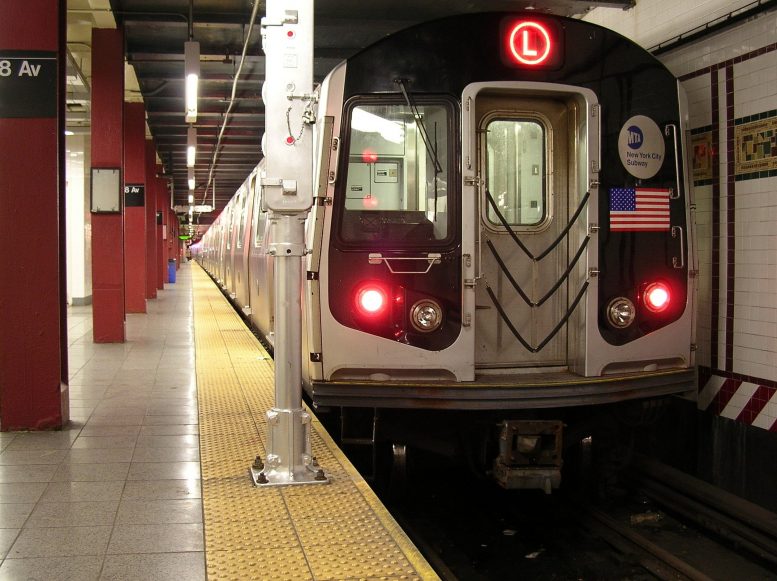Mild suffering for a long time or significant hardship for a shorter time. Those were the choices faced by the Metropolitan Transportation Authority when it came to post-Hurricane Sandy repairs on the L train tunnel under the East River. The MTA has opted for the latter option.
Starting as early as 2019, the Canarsie Tunnel, which is in between the stops at First Avenue in Manhattan and Bedford Avenue in Brooklyn, will be shut down for 18 months, the agency announced on Monday. There will also be no service along the 14th Street corridor in Manhattan because there is no way for the trains to reach a maintenance facility without exiting the borough.
In the meantime, the MTA is looking to increase capacity on the G, J, and M trains to help riders using alternate routes.
The tunnel suffered extensive damage to tracks, signals, switches, power cables, signal cables, communication cables, lighting, cable ducts and bench walls throughout a seven-mile long flooded section of both tubes, according to the MTA. Bench walls throughout those sections must be replaced to protect the structural integrity of the two tubes that carry trains through the tunnel.
“While the MTA always looks to avoid service disruptions, there is no question that repairs to the Canarsie Tunnel are critical and cannot be avoided or delayed. Throughout this process we have committed to engaging the community and listening to all concerns so that we can address them as we prepare for this necessary work,” MTA Chairman Thomas Prendergast said. “We are committed to working with the community just as closely as we develop ways to add service to help minimize the impacts of the closure.”
The MTA engaged the public and community boards and the sentiment was that riders want to get this over and done with as soon as possible. The alternative was a three-year-long partial shutdown of the L train between boroughs.
“Approximately 80 percent of riders will have the same disruptions with either option. Throughout our extensive outreach process and review, it became clear that the 18-month closure was the best construction option and offered the least amount of pain to customers for the shortest period of time,” New York City Transit President Veronique “Ronnie” Hakim said. “The 18-month option is also the most efficient way to allow MTA to do the required work. It gives us more control over the work site and allows us to offer contractor incentives to finish the work as fast as possible.”
In addition to the Canarsie Tunnel repairs, the L train’s aforementioned First Avenue and Bedford Avenue stations will be getting new stairs and elevators and the line will be getting more power to allow for more trains during the rush hours.
A great many tunnels were flooded during Sandy, including the R train’s Montague Tunnel under the East River and the G train’s tunnel under the Newtown Creek, which were shut down for 13 months and two months, respectively, for repairs. The Brooklyn Battery Tunnel (officially the Hugh L. Carey Tunnel) was filled with water and also needed significant repairs.
Subscribe to YIMBY’s daily e-mail
Follow YIMBYgram for real-time photo updates
Like YIMBY on Facebook
Follow YIMBY’s Twitter for the latest in YIMBYnews






In touch of power on Hurricane Sandy, hard flooded but 18 months can take tunnel over damage.
Now that I see what is shut down I feel better. All you have to do is get off at
42nd St and you can pretty much get any train you need. Fortunately for me, I
live in an area where I have a bus to take me to another station…a ten minute
ride and the BM2 which stops right by me that takes me to Manhattan both lower
and upper Manhattan (to 57th St)..I guess those who live at the Bedford stop
will have bus service
This should have been done already.